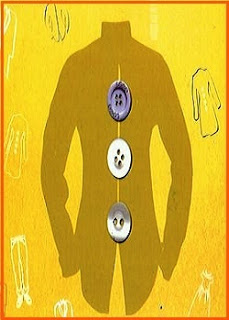RMG sector is a laborious business where so many guys have to carry stress to achieve a particular target. It is always hard working track where every minute is counted. Apparel Industry exist many players. The vital players in this arena are:
 1) Manufacturer Exporters: This entity is that who procure fabric and accessories and accomplish sewing, finishing, washing, packing and ultimately ship the finished goods to the traders. They should have own import export code (IEC) number and also should have own production facilities. Some vendors have a conglomerate business. Who makes himself accessories or fabric? Sometimes they place the order to sub-contact factory when quantity is much or shipment date knocks at the door.
1) Manufacturer Exporters: This entity is that who procure fabric and accessories and accomplish sewing, finishing, washing, packing and ultimately ship the finished goods to the traders. They should have own import export code (IEC) number and also should have own production facilities. Some vendors have a conglomerate business. Who makes himself accessories or fabric? Sometimes they place the order to sub-contact factory when quantity is much or shipment date knocks at the door.2) Merchant Exporters: This entity fetches the order from buyer and forwards the order to another manufacturer to execute the order by collecting fabric and other accessories. Though they deal with the buyers directly, they do not have enough production facilities. Eventually, they ship the goods to the vendors in their name after re-invoice and re-packaging. In addition, they take commission. Currently, most of them prefer to set up garment’s factory because it does not require much investment but little complicated to control.
3) Buying house: Buying house is a center which used as a representative office of foreign buyers to do a smooth operation in other countries local factory. This kind of office mainly set up to follow up local business partner’s function. Buying house has to do several tasks such as:
a) Evaluate ethical standard and audit exporter’s function.
B) Follow up from order placement to product delivery.
C) Inspection and generous approvals.
D) Sample receives from the factory and sends to the buyer or Vice- Versa is also correct.
E) Business development and relation build up.
F) Provide information to exporter during documentation and delivery
g) Guide the buyer if they wish to visit local factory
h) Evaluate exporter’s performance
4) Liaison office: This entity works as a bridge between a specified buyer, department or brand, and vendor. They have own merchandising people, quality checking people. They check the costing of vendors and quality, workmanship, measurement, washing outcome of the wearers. This kind of office mainly set up to follow up local business partner’s function. Only big buyers are capable of launching an individual liaison office because their business volume demands it. They also evaluate the ethical standard of the vendor which is a compliance issue. Walmart at Gulshan in Dhaka is an example.
5) Textile: It is that entity which produces main ingredient of the wearer that is fabric. There are solid and yarn dyed fabric textiles. Fabric consumes 60% of the wearer costing. Popular fabric is CVC twill, end-on-end, seer sucker, chambray, gingham, linen, TC pocketing, herringbone twill, corduroy, spandex twill, canvas, and denim. The innovative textile product helps to enhance apparel business. Even apparel industries production plan depends on Textile products lead time and quality.
6) Buying Agent: Importance of buying agent in the apparel industry is inevitable, and they made a bridge between buyers and exporters. This entity can do the business with different buyers and can give the orders to different vendors. They work with various brands. It is a fact that small and medium buyers do not have enough strength to open an individual buying house to favor them due to the low volume of functions. So, they prefer buying agent to execute their operations in a different location. Comtextile at Agrabad in Chittagong is an example.
7) Workers: There are two types of workers in the apparel industry. One is blue collar, and another is white collar workers. Both of them are inevitable for the industry. Their knowledge regarding machine, sewing, fabric, measurement, washing and packaging is necessary to carry out the order. They follow TQM (Total quality management) and emphasize on supply chain management.
8) Suppliers: This entity is that who provide raw materials and accessories to the manufacturers. They may provide fabric, yarn, zipper or other accessories, necessary machinery or spare parts; service oriented task like documentation, logistics, shipping, banking etc. to expedite production. These suppliers also play a vital role in apparel industry by providing material or service.
By reading above article, we may realize how RMG sector is spreading rapidly at home and abroad by the contribution of these players.
You may like: How to Execute a bulk Order in Garment Industry




Leave a Reply
You must be logged in to post a comment.